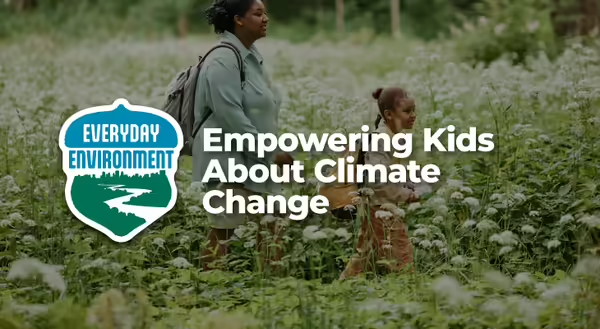
“Save the Planet” was the repeated Earth Day slogan heard in every school for decades. We thought it made sense, yes, we should save the planet. But looking at it now as we contemplate where we are in our own created history of rising oceans, the depletion of massive water reservoirs, flooding, and droughts, do we really believe the planet needs saving? “Save the Humans” might be a more realistic mission. Saving our way of life and the comforts we enjoy will require action now and well into the future.
One of the reasons we struggle with agreeing about climate change is that this challenge seems so overwhelming and can feel distant. So we keep living our life like it is not going to affect us. That strategy is no longer an option for our current situation. Our kids are watching us to see how we handle climate change on their behalf. They do not fully understand it, most of us do not; however, we need to take what we do know so we can engage with the generations who will be forced to take on our future head-on to help the human population sustain itself.
It is important that we empower young children to learn about their climate and the impacts it has on their community. Not by focusing only on the negative aspects of climate change, but by giving them knowledge and a path to create the change needed. Engaging young people in their own communities is a place to start the process of believing they are heard and can participate in bigger conversations. They become empowered to be a community member who may one day get voted on to their county board. What do we want them to do when they get there and how do we give them the confidence and skills to make wise decisions about their natural environment and climate caused concerns?
Keep learning local
We can start by keeping it local. Place-based learning is all about using the community you are in to engage youth in experiential learning. If we include them in what is happening around them, they gain a sense of ownership, not fear. So, we engage them in age-appropriate conversations about their community’s sustainability as it relates to climate. Help support local education examples such as holding soil in place with cover crops instead of an example of mudslides in California. Engage them in hands-on projects that make their communities more resilient so they can point at something they helped complete. Keep it local and this will give them confidence they can apply anywhere in a wider region when they are grown.
Integrate climate change into curriculum
To empower youth, we also need to build a future of knowledgeable willing people who will take on climate change as a personal challenge. This means we need built in climate information throughout the school grade levels. We cannot just do this in science class as many schools do not offer science every day. Only offering climate knowledge in science is not inclusive to the challenge it presents. In addition to science education, students need climate nonfiction stories for literature, engaging them with other students who live in the most effected countries in social studies so they can put knowledge to work solving climate situations, and analyzing climate change on all levels of learning.
Create a path to climate careers
Once we build their knowledge and skills within their communities we need to give them a target, a career to consider. They need to see the available information on potential climate-related degrees and positions to fill once they graduate. These include researchers and scientists, but also educators, communicators, data analysts, financial, and many more sectors. We need to create a path, so they see the value in their interest and their ability to solve the most complex climate issues.
Someone said recently that climate is not the problem, but it is how the population lives and sustains itself that creates our climate situation. We have the knowledge and opportunity to consistently engage our kids with positive actions and help them create a sustainable future. It is not our choice; it is our responsibility.
Thank you for reading!
Everyday Environment is a series of blogs, podcasts, webinars and videos on exploring the intricate web of connections that tie us to the natural world. Check out the podcast episode on this topic to hear more on empowering youth about climate change with Peggy Anesi.
Subscribe to Everyday Environment Newsletter More about Everyday Environment